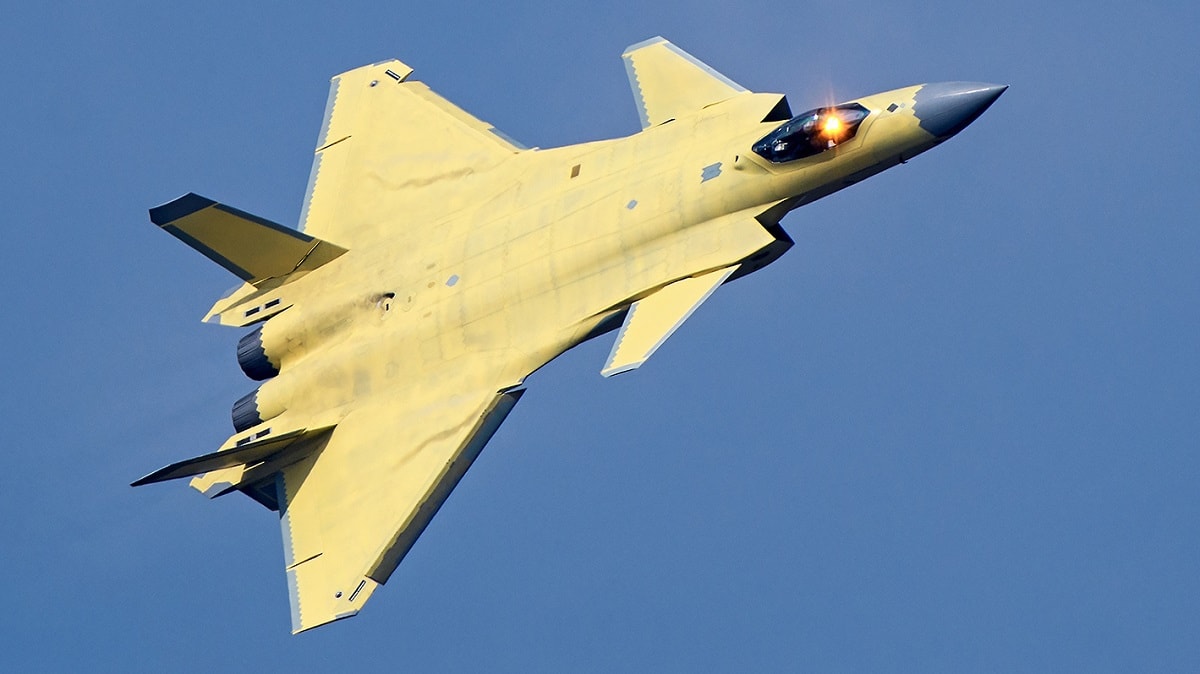Will the J-20 ‘Mighty Dragon’ Spawn Whelps or Wyrmlings Draglettes? – In Western fantasy mythology the offspring/hatchlings of dragons are referred to as “whelps” or “wyrmlings,” but it is unlikely that such monikers would be applied to the mini-drones that could serve as “loyal wingmen” to the People’s Liberation Army Air Force (PLAAF) J-20 “Mighty Dragon.”
However, China’s most advanced fighter could soon be flying with such drones.
The People’s Republic of China (PRC) has long touted the capabilities of its Chengdu J-20 stealth fighter since it was first introduced in 2011. The fifth-generation superiority fighter, which descended from the J-XX program of the 1990s, entered service in March 2017 while the first J-20 combat unit was formed a year later.
The J-20 Mighty Dragon is also just the world’s third operational fifth-generation stealth fighter aircraft after the United States military’s F-22 Raptor and F-35 Lightning II Joint Strike Fighter. Soon China’s aircaft could have loyal wingmen drones watching its back. These semi-autonomous aircraft promise to be a force multiplier for the aircraft, while also allowing the human pilots to stay further from high-threat zones.
The drones could be used in a plethora of mission functions including reconnaissance, acting as a decoy and even simply being used to jam enemy radar in an effort to assist the J-20 during combat missions.
What the PLAAF will actually call them we can only guess.
U.S. Tech Involved?
The other question is how much China may have garnered from U.S. efforts to develop drones including those of Boeing Australia, which first unveiled its loyal wingman drone in 2019.
The Boeing MQ-28 Ghost Bat – previously known as the Boeing Airpower Teaming System (ATS) – was developed as part of its Loyal Wingman project. The stealth, multirole, unmanned aerial vehicle can perform autonomous missions independently by utilizing its artificial intelligence (AI) capabilities.
China has long operated by the notion that good artists borrow, and great artists steal, and its theft of U.S. technology aviation technology has almost unquestionably played a role in the development of the J-20. The Mighty Dragon was almost certainly born of stolen designs from the United State Air Force’s Lockheed Martin F-22 Raptor. The appearance and profile of the aircraft are far from the only similarities between the two fifth-generation fighters.
It would be a tremendous coincidence that the J-20’s development began in earnest only after the F-22 was first unveiled, yet some of the technology on the Chinese fighter has been described as looking “awfully similar” to systems on the Lockheed Martin F-35 Lightning II Joint Strike Fighter. That has included a sensor system that is close in design to the Lockheed Martin Electro-Optical Targeting System found on the F-35 Lightning II.
Such technology surely suggests that espionage played some role in the Mighty Dragon’s development, and it does seem that the J-20 was hatched from stolen technology. Now, it is just as likely that any “Mighty Draglette” has a similar origin.
Now a Senior Editor for 1945, Peter Suciu is a Michigan-based writer who has contributed to more than four dozen magazines, newspapers and websites. He regularly writes about military hardware, firearms history, cybersecurity and international affairs. Peter is also a Contributing Writer for Forbes.

